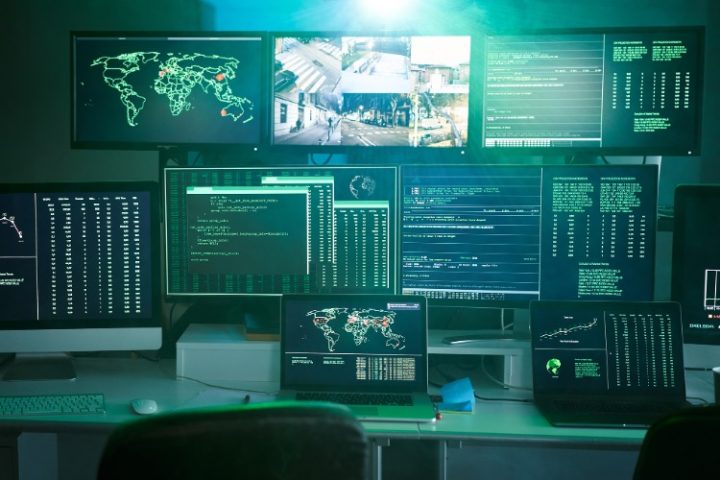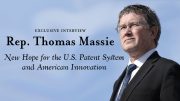
“Charity is no part of the legislative duty of government. It would puzzle any gentleman to lay his finger on any part of the Constitution which would authorize the government to interpose in the relief of … sufferers.” — James Madison, Speech in the House of Representatives, January 10, 1794
In Spokane County, Washington, a symphony of cutting-edge technology is poised to harmonize within the realms of the Real Time Crime Center — an ambitious endeavor embraced by multiple cities.
With unwavering determination, sheriff’s deputies orchestrate this innovative nexus, envisaging a realm where swifter response times and the translation of data into crime-solving triumphs reign supreme.
In this brave new world, technology unfurls its tendrils, bridging the gap between data and action, aspiration and realization. The Real Time Crime Center, a formidable beacon of innovation, stands as a testament to the county’s commitment — a commitment not only to swifter justice but also to an ever-deepening understanding of the human narrative.
Although it’s the most impressive, it’s certainly not the only intrusive technology deployed by police in a post-pandemic spending spree.
Flock Safety is a digital sentry that beckoned with the promise of swift revelations. A screen, a portal into a world woven by a network of 46 Automated License Plate Reader (ALPR) cameras, stands ready to record and reveal the otherwise unnoticeable aspects of passing vehicles, vehicles driven by people not suspected of any crime, yet whose faces, cars, bumper stickers, passengers, and travel patterns are now stored indefinitely on sheriff’s office servers.
Another tool of surveillance paid for with “pandemic” relief money that made its way to the Spokane County Sheriff’s office — and across the country — is $150,000 worth of “video analytics” software. This facial-recognition software is no ordinary surveillance device; it boasts a mastery of machine learning, the secrets of which allow it to scan days of footage in mere moments. What’s more, it allows this visual mosaic to be searched in ways that would seem to belie its sheer complexity. A cacophony of innumerable images are now collected, collated, and cataloged, combining them in a landscape of data that can be tamed by a deputy entering a few descriptive keywords.
It’s a brave new world where bytes and pixels intersect with the tangible world, where the artistry and algorithms of software encourage local police to decipher data and in the quickest and quietest way track every vehicle and every person that comes within the massive scope of electronic eyes, ears, and brain.
Although most Americans likely don’t realize it, those ubiquitous traffic cameras, as well as the “new normal” of other surveillance equipment, are being used in ways that destroy the protections afforded by the Fourth Amendment. The government is prohibited from conducting searches without a warrant based on probable cause to search “persons or things.”
This latest assault on our liberty has it’s origin in chicanery masquerading as charity.
The story starts last spring. The ink had barely dried on the $1.9 trillion American Rescue Plan Act (ARPA) when President Joe Biden proudly unveiled the potential it held. Sold as a lifeline for struggling Americans and a shield against crippling healthcare costs, a massive $350 billion reservoir for state and local governments filled with money taken from those same Americans it was supposed to now be saving from financial ruin — financial ruin, remember, that was caused by the government’s lockdown of the country and hijacking of its economy.
Fast forward a year, and ARPA has emerged as President Biden’s way of defying those who suggested Democrats were ready to defund the police.
During this year’s State of the Union address, President Biden held up the American Rescue Plan as evidence that his party is committed to law enforcement. “The American Rescue Plan … provided $350 billion that cities, states, and counties can use to hire more police, invest in more proven strategies like community violence interruption, trusted messengers,” Biden asserted.
His message was clear: Defunding the police isn’t the answer; in fact, it’s quite the opposite. “We should all agree the answer is not to defund the police,” he declared, with emphasis. “It’s to fund the police. Fund them. Fund them. Fund them with the resources and training — resources and training they need to protect our communities.”
Protect our communities by using otherwise unattainable infusions of billions of dollars into local budgets, convincing local law enforcement to allow themselves to be repurposed into impressively outfitted outposts of the federal surveillance apparatus.
Countless state and local governments acted swiftly, channeling their share of the federal Covid-19 relief funds into equipping local law-enforcement departments with everything from bolstered payrolls to acquisition of state-of-the-art equipment as I described earlier. An impressive $101 billion, out of the grand total of $350 billion, was spent by localities in surveillance technology, armored vehicles, and other technology and materiel more familiar in waging war than in enforcing the law.
Just as the Covid-19 “recovery” money, ostensibly outlays to help the American people recover from the devastating economic effect of the exercise of immense and tyrannical power of the federal and state governments, future “emergency recovery” funds will likewise be funneled into the hands of politicians and corporations colluding to enrich themselves by expanding the government’s ability to keep a greater number of Americans under constant unwarranted, unconstitutional surveillance, surveillance conducted with technology purchased with their own money.



